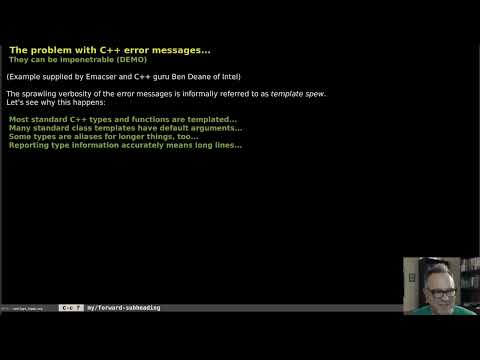Description:
Explore how to enhance C++ compiler diagnostics using Emacs overlays in this 21-minute conference talk from EmacsConf 2023. Learn about overlay creation, properties, and manipulation techniques before diving into practical applications for improving C++ error message readability. Discover how to treat C++ type names as balanced expressions, create a minor mode for compilation, and implement indentation and hiding strategies using overlays. Gain insights into parsing complex types, applying pretty printing algorithms, and customizing overlay depth for optimal diagnostics display. Conclude with a demonstration showcasing the power of overlays in simplifying C++ compiler output within Emacs.

Improving Compiler Diagnostics with Overlays in Emacs - EmacsConf 2023
Add to list